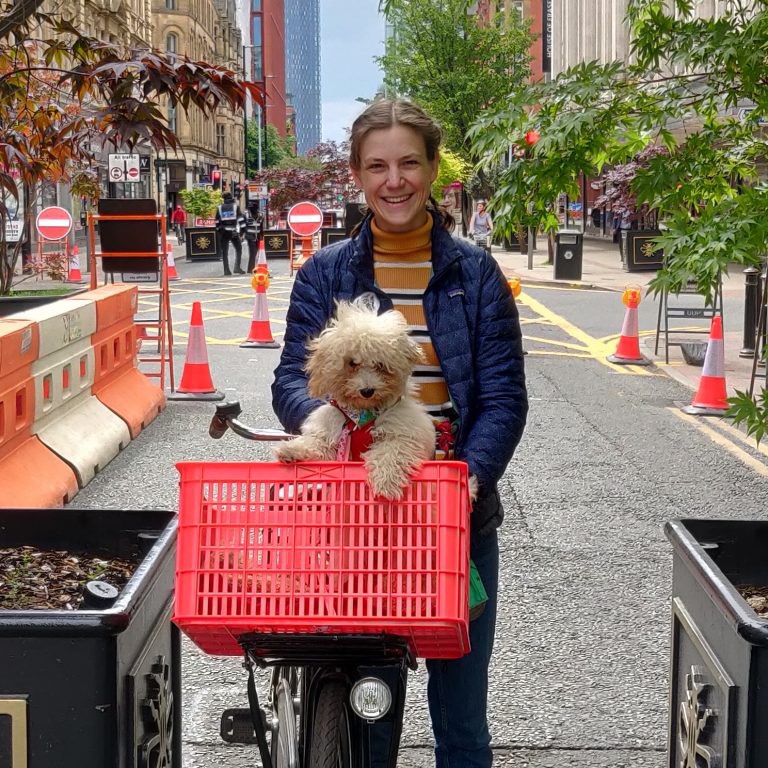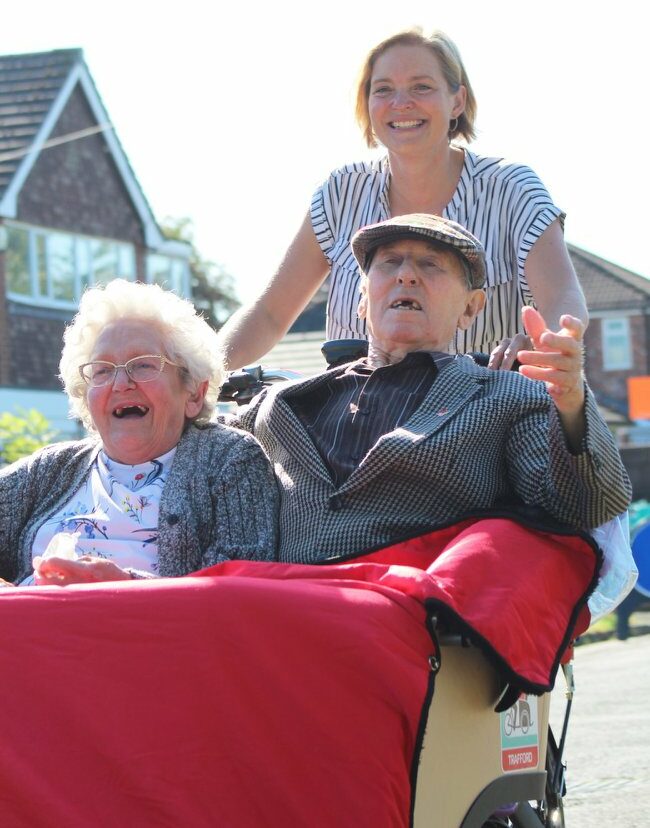Putting Disabled People at the Heart of Active Living
Even in 2022, disabled people are still facing challenges when it comes to accessing and enjoying our street spaces. In 2021 the Office of National Statistics reported that disabled people in the UK aged 16-64 had poorer ratings than non-disabled people on all four personal wellbeing measures, including life satisfaction, feeling like things they do are worthwhile, happiness and anxiety.
Researcher Harriet Larrington-Spencer understands the struggles of disabled people trying to maintain an active lifestyle all too well. Read more below to discover how Harriet believes that every movement should also be committed to accessibility.
What active living barriers do disabled people face?
Harriet Larrington-Spencer is a researcher at Salford University. After being hit by a car and becoming permanently disabled, her research now focuses on inclusive transport.
Soon after her accident, Harriet began exploring how she could continue cycling whilst around her local areas, which she found to be much more of a struggle.
“It’s quite emotional because you start seeing how the world isn’t designed for people like you. I’ve definitely started avoiding spaces that I know have poor accessibility even if I can access them, because all I can think about when I’m in those spaces is who can and can’t access them”

Barriers for disabled cyclists
One of the biggest barriers when it comes to disabled cycling is the cost of owning a non-standard bike. While it is possible to find bikes equipped with machines and gadgets for disabled people, they’re produced in small quantities, so are often more expensive and harder to find. Most disabled friendly bikes start at around £500, while the average price of a regular bike is just £365. Harriet also shared her personal experience with buying a non-standard cycle.
“Mine cost the price of a car and I was lucky to be able to afford that through an insurance pay out. There’s something called the ‘disability price tag’ so disabled people’s everyday life is more expensive than a non-disabled person’s life anyway, to then have to buy these non-standard cycles or mobility aids”
Barriers for disabled walkers
Another barrier that disabled people face is walking around their local areas. Despite the introduction of active neighbourhoods around Greater Manchester, many pavements are still very low quality, due to amount of cars that regularly park on them.
“Within our older people focus group, there was a couple of women that were saying that it’s so boring to walk outside because all I can do is look at the pavement because the pavement condition is so poor and if I fall and injure myself then I won’t be able to do anymore walking”
Barriers for wheelchair users
For wheelchair users, public transport can also be a problem, due to a lack of space for multiple disabled people, Harriet explains:
“There’s spaces for wheelchairs on busses but only one space, so if there’s another wheelchair user already using the bus then you’ll have to wait for the next one, and two wheelchair using friends can’t travel together. Hopefully with the reregulation of busses they’re redesigning what busses will look like in Greater Manchester”

So, what can be done about these barriers?
While some of these barriers can be difficult to overcome, Greater Manchester have now begun their journey towards making our streets and roads more inclusive.
- The Bee Network, which will integrate all buses, trams, cycling and walking systems across Greater Manchester by 2024, will also be using LTN 1/20 design guidance.
“This is really good in terms of cycling because all infrastructure is designed around non-standard cycle design vehicles, so really inclusive cycling design structures can come out of that.”
- In addition to this, Harriet now sits on the Walking and Cycle Board for the Disabled People’s Panel and is hoping to make a difference through being in this new position.
“This board oversees the walking and cycle strategy for Greater Manchester. It’s a new position that hadn’t been there before, so we’re hoping that will have an impact in terms of inclusivity”
- In terms of walking routes, giving older and disabled people access to local places to socialise can make a world of difference when it comes to active living and social isolation.
“Green spaces are sometimes a bit of a walk away, so it’s much more convenient for older people to be able to see people and sit on a bench in your local area than it is to have to walk to a park. The perception that it would reduce social isolation came out in the research but also more broadly in how people want to use their neighbourhoods”
- The solution for disabled walkers could be in the form of 20 Minute Neighbourhoods, a concept created for Plan Melbourne. This concept includes giving people the ability to meet most of their daily needs within a 20-minute walk from home, with safe cycling and local transport options.

Want to learn more about what we’re doing to create accessible, more inclusive neighbourhoods? Check out some of our projects below:
Our Streets Chorlton Open Streets
